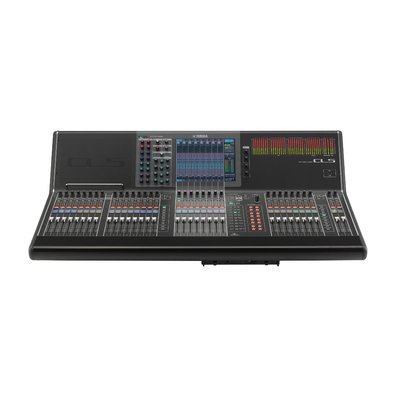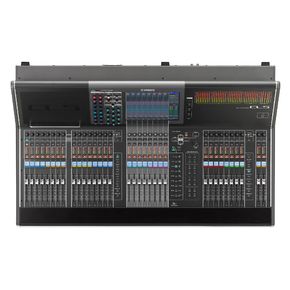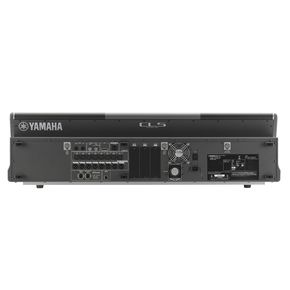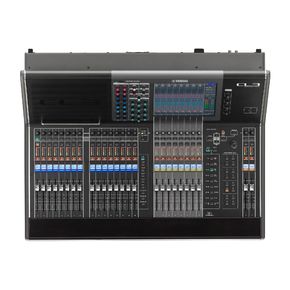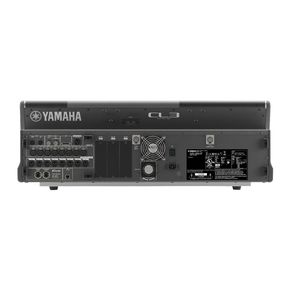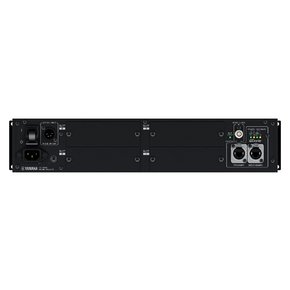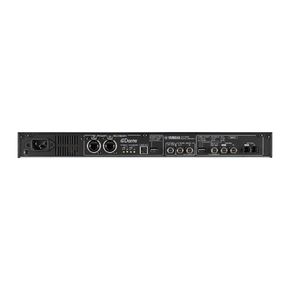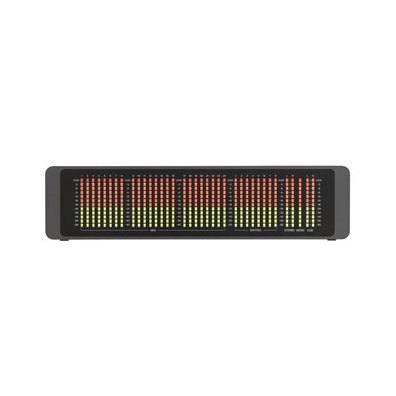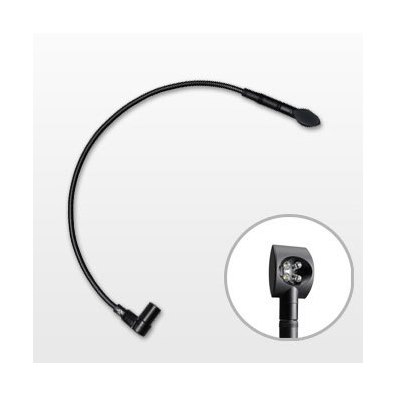產(chǎn)品詳情

產(chǎn)品信息
音質(zhì)
對于每個音響師、藝術家和聽眾來說,音質(zhì)是設備的根本。在這個前提下,通過全面分析、測試和改進電路和技術的每個細節(jié),Yamaha CL 系列調(diào)音臺擁有了無比純凈的音質(zhì)。不僅如此,它還擁有一系列豐富的“色彩”可供選擇,從而為使用它們的音頻工作者提供了大的創(chuàng)新自由度。調(diào)音臺的信號處理器數(shù)量龐大,音質(zhì)出眾,其中包括的Portico 5033/5043EQ 均衡器和壓縮器等設備,它們將Yamaha VCM 技術與傳奇的Rupert Neve技術完美地結合在一起。在純凈自然的硬件平臺聲音基礎上,音響調(diào)音師們獲得了大幅度創(chuàng)造理想聲音效果的可能。
創(chuàng)建理想自然的聲音平臺
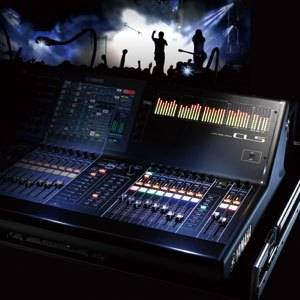
CL 系列調(diào)音臺全面運用了目前先進的數(shù)字音頻技術,它所詮釋的自然音質(zhì)為藝術家和音響師發(fā)揮想象力提供了充分的條件。這種音質(zhì)不能單單用技術指標衡量。反復聽取行業(yè)中人士的評價,進行聽音評測,作為改善其聲音品質(zhì)不可或缺的環(huán)節(jié)。開發(fā)者們花費了大量的時間,付出了巨大的努力,創(chuàng)造了新一代CL 系列數(shù)字調(diào)音臺。
細致入微的聲音
挑戰(zhàn)始于調(diào)音臺的輸入口。為了獲得超高水準的音質(zhì),每個部件——供電部分、接地部分、電路板、機械結構以及信號初始輸入階段中數(shù)不勝數(shù)的細節(jié),都必須經(jīng)過為嚴苛的精選和設計。作為開發(fā)進程中重要環(huán)節(jié)的聽音實測,也正是從這個初階段開始的。 因為改變一個電子元件可能讓聲音產(chǎn)生非預期的結果,所以開發(fā)流程中細微的變更也注意并進行評估。AD 和DA 轉換器也進行了嚴格的測量,以達到優(yōu)良的性能。另外還有詳盡的AD/DA 主時鐘頻譜分析、FPGA 時鐘信號引導的調(diào)節(jié),以獲取自然具音樂性的聲音。任何音頻系統(tǒng)的另一個重要評判指標是供電部分。這其中除了供電能力以外,供電電容的品質(zhì),以及接地功能都必須嚴格設計和制造,以確保達到低阻抗等嚴格要求。這一切使輸入信號能好地自然還原,為信號處理和效果器提供良好的基準,終產(chǎn)生完美的聲音。
非凡的品質(zhì)和創(chuàng)新潛力
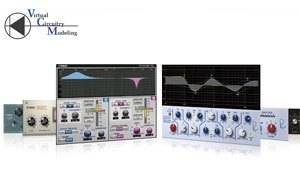
為了創(chuàng)造盡可能豐富的現(xiàn)場聲并滿足藝術家的要求,音響師會運用他們的經(jīng)驗和想象力創(chuàng)造大量實用或是富于創(chuàng)造力的音效。因此調(diào)音師的首要工具——調(diào)音臺,必須能滿足上述一切要求。當然音質(zhì)是根本,但音質(zhì)只是CL 系列調(diào)音臺眾多優(yōu)勢的一部分。它們還配置了先進的虛擬電路建模技術,能夠按用戶的需要添加的聲音特性,在保證聲音真實性的前提下塑造聲音。
echnical Specification of CL/QL
*1) This is the maximum number of devices shown in the ONLINE DEVICE LIST of Dante SETUP. Only devices shown in the list can be mounted from the console.
*2) Each rack in the REMOTE HA ASSIGN window can have up to 32 channels.
CL5, CL3, CL1
| CL5 | CL3 | CL1 | ||
|---|---|---|---|---|
| Sampling frequency rate | Internal | 44.1kHz / 48kHz | 44.1kHz / 48kHz | 44.1kHz / 48kHz |
| External | 44.1kHz: +4.1667%, +0.1%, -0.1%, -4.0% (±200ppm), 48kHz: +4.1667%, +0.1%, -0.1%, -4.0% (±200ppm) | 44.1kHz: +4.1667%, +0.1%, -0.1%, -4.0% (±200ppm), 48kHz: +4.1667%, +0.1%, -0.1%, -4.0% (±200ppm) | 44.1kHz: +4.1667%, +0.1%, -0.1%, -4.0% (±200ppm), 48kHz: +4.1667%, +0.1%, -0.1%, -4.0% (±200ppm) | |
| Signal delay | Less than 2.5ms, OMNI IN to OMNI OUT, Fs=48kHz | Less than 2.5ms, OMNI IN to OMNI OUT, Fs=48kHz | Less than 2.5ms, OMNI IN to OMNI OUT, Fs=48kHz | |
| Total harmonic distortion | Less than 0.05% 20Hz-20kHz@+4dBu into 600Ω, OMNI IN to OMNI OUT, Input Gain = Min. | Less than 0.05% 20Hz-20kHz@+4dBu into 600Ω, OMNI IN to OMNI OUT, Input Gain = Min. | Less than 0.05% 20Hz-20kHz@+4dBu into 600Ω, OMNI IN to OMNI OUT, Input Gain = Min. | |
| Frequency response | +0.5, -1.5dB 20Hz-20kHz, refer to +4dBu output @1kHz, OMNI IN to OMNI OUT | +0.5, -1.5dB 20Hz-20kHz, refer to +4dBu output @1kHz, OMNI IN to OMNI OUT | +0.5, -1.5dB 20Hz-20kHz, refer to +4dBu output @1kHz, OMNI IN to OMNI OUT | |
| Dynamic range | 112dB typ.: DA Converter / 108dB typ.: OMNI IN to OMNI OUT, Input Gain = Min. | 112dB typ.: DA Converter / 108dB typ.: OMNI IN to OMNI OUT, Input Gain = Min. | 112dB typ.: DA Converter / 108dB typ.: OMNI IN to OMNI OUT, Input Gain = Min. | |
| Hum & noise level | Equivalent input noise | -128dBu typ., Equivalent Input Noise, Input Gain=Max. | -128dBu typ., Equivalent Input Noise, Input Gain=Max | -128dBu typ., Equivalent Input Noise, Input Gain=Max |
| Residual output noise | -88dBu, Residual output noise, ST master off | -88dBu, Residual output noise, ST master off | -88dBu, Residual output noise, ST master off | |
| Crosstalk | -100dB*1, adjacent OMNI IN/OMNI OUT channels, Input Gain = Min. | -100dB*1, adjacent OMNI IN/OMNI OUT channels, Input Gain = Min. | -100dB*1, adjacent OMNI IN/OMNI OUT channels, Input Gain = Min. | |
| Power requirements | US/Canada: 120V 60Hz, Japan: 100V 50/60Hz, China: 110-240V 50/60Hz, Korea: 220V 60Hz, Other: 110-240V 50/60Hz | US/Canada: 120V 60Hz, Japan: 100V 50/60Hz, China: 110-240V 50/60Hz, Korea: 220V 60Hz, Other: 110-240V 50/60Hz | US/Canada: 120V 60Hz, Japan: 100V 50/60Hz, China: 110-240V 50/60Hz, Korea: 220V 60Hz, Other: 110-240V 50/60Hz | |
| Power consumption | 170W: Internal Power Supply / 200W: Simultaneous use of Internal PSU and External PW800W | 170W: Internal Power Supply / 200W: Simultaneous use of Internal PSU and External PW800W | 170W: Internal Power Supply / 200W: Simultaneous use of Internal PSU and External PW800W | |
| Dimensions | W | 1053mm (41 1/2in) | 839mm (33 1/8in) | 648mm (25 5/8in) |
| H | 299mm (11 3/4in) | 299mm (11 3/4in) | 299mm (11 3/4in) | |
| D | 667mm (26 1/4in) | 667mm (26 1/4in) | 667mm (26 1/4in) | |
| Net weight | 36kg (79.4lb) | 29kg (63.9lb) | 24kg (52.9lb) | |
| Others | Temperature Range: Operating temperature range: 0 - 40℃, Storage temperature range: -20 - 60℃ | Temperature Range: Operating temperature range: 0 - 40℃, Storage temperature range: -20 - 60℃ | Temperature Range: Operating temperature range: 0 - 40℃, Storage temperature range: -20 - 60℃ | |
Analog Input Characteristics
*1. Sensitivity is the lowest level that will produce an output of +4dBu(1.23V) or the nominal output level when the unit is set to maximum gain.(all faders and level controls are maximum position.)
*2. XLR-3-31 type connectors are balanced..(1=GND, 2=HOT, 3=COLD)
*3. In these specifications, 0dBu = 0.775 Vrms.
*4. All input AD converters are 24bit linear, 128times oversampling.
*5. +48V DC ( phantom power ) is supplied to OMNI IN (1-8) and TALKBACK XLR type connectors via each individual software controlled switches.
Analog Output Characteristics
*1. XLR-3-32 type connectors are balanced.( 1=GND, 2=HOT, 3=COLD )
*2. PHONES stereo phone jack is unbalanced.( Tip=LEFT, Ring=RIGHT, Sleeve=GND )
*3. In these specifications, 0dBu = 0.775 Vrms.
*4. All output DA converters are 24bit, 128times oversampling.
*5. There are switches inside the body to preset the maximum output level.
*6. The position of the level control is 10dB lowered from Max.
Digital Input & Output Characteristics
Digital Output Characteristics
*1. XLR-3-32 type connectors are balanced. (1=GND, 2=HOT, 3=COLD)
I/O Slot (1-3) Characteristics
Control I/O Characteristics
Each I/O Slot accepts a Mini-YGDAI card. Only Slot1 has a serial interface.
*1. Input pins: Internal TTL-level pull-up resistors provided (47kΩ). Output pins: Open-drain output (Vmax = 12V, max. sink current/pin = 75mA) Power pins: Output voltage Vp = 5V, max. output current Imax = 300mA
*2. Pin 4 = +12V, Pin 3 = GND, lamp rating 5W. Software voltage control.
以數(shù)字方式再現(xiàn)動人的模擬聲
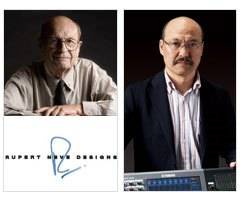
Rupert Neve 先生是音頻行業(yè)的傳奇。他的貢獻貫穿于音頻錄音和制作行業(yè)發(fā)展的歷史和,其所推出的話筒前級放大器、均衡器、壓縮器和調(diào)音臺都成為專業(yè)音頻領域的黃金標準。
毫無疑問,Mr. Neve 對待聲音的態(tài)度非常嚴肅,因此他本人和他的Rupert Neve Designs 公司正式認可Yamaha 原型VCM(虛擬電路建模)技術是我們巨大的榮幸。他們表示,該技術是能夠準確建模豐富而具表現(xiàn)力的模擬聲的技術。采用VCM 技術,數(shù)字音頻會被終賦予模擬設計方案的音質(zhì)。
VCM 技術由Toshi Kunimoto(“Dr. K”)先生和他的Yamaha創(chuàng)新部門“K’s Lab”所開發(fā),是一種電路建模概念,深入到電容和電阻層面高效模仿每個電路部件的詳細特性,終創(chuàng)造出一種驚人的真實電路模擬效果,這種技術的聲音輕松超越任何普通數(shù)字模仿技術的效果。然而精確性也不是的考量標準,音樂性也同樣重要,兩者都可以通過VCM 建模技術實現(xiàn)。
CL 配備了的Neve Portico 5033 均衡器和Portico 5043 壓縮/ 限制器等VCM 型號效果器,而這兩種效果器都是在Yamaha 和 Rupert Neve Designs 公司緊密合作下開發(fā)的。調(diào)音臺中還包括其它VCM均衡器、壓縮器和錄音棚級效果器。相信您一定會聽出其中的不同。
內(nèi)建了革命性的Dan Dugan自動混音器

通過與Dan Dugan Sound Design公司的深度合作,具有先進算法的Dan Dugan自動話筒混音技術已經(jīng)被應用到CL系列調(diào)音臺。方便的設置:只需將處理器插入多16個通道,即可自動優(yōu)化話筒增益的分配。增益控制平滑流暢,像一名經(jīng)驗豐富的音響師正在操作一樣。系統(tǒng)能夠有效降低反饋和梳狀濾波問題。對于演講用途,尤其是脫稿演講時,該功能可讓調(diào)音師擺脫不斷操作推子的工作,專注于其它調(diào)音細節(jié),從而獲得持續(xù)的高品質(zhì)混音。


